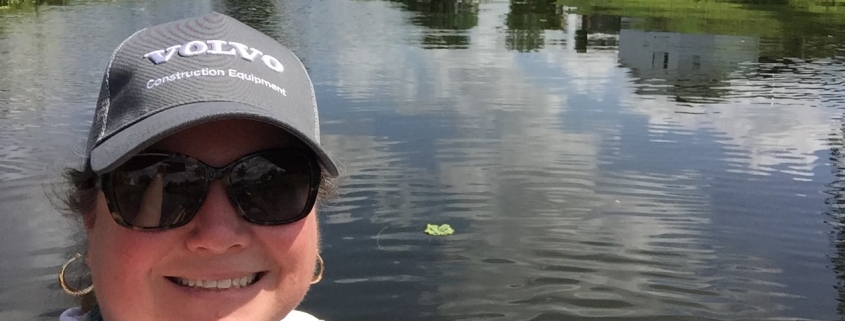Living Within LWDD Boundary
Living within the Lake Worth Drainage District (LWDD) boundary provides you the unique opportunity to help improve water quality and drainage function through your daily actions. In this article we hope to inspire residents to take voluntary steps toward more canal-friendly living.
In this area of South Florida, we get our drinking water supply from surface water (rain). Surface water will runoff roof tops, over lawns and roadways. Traveling across these surfaces, it picks up a variety of things including sediments, trash, fertilizers, pesticides, and oil washed off streets and lawns. Eventually the water will collect in ponds, swales, and other low-lying areas which not only provide flood protection but also create a natural filtration system by allowing the water to slowly percolate or seep through our sandy soils.
Residents can help by limiting the installation of non-pervious areas. When you are putting in a driveway, pathway, or patio on your own property, consider using gravel, paving stones, or flagstones that will allow the surface water to filter into the soil. LWDD canals are designed and constructed so surface water is retained within the residential boundary. Direct discharge of surface water into the canal system is not allowed. Residents living adjacent to an LWDD canal need to take extra care with the location of roof down spouts (gutters), pool drains, irrigation lines, etc., so that the water is directed to areas that will allow it to slowly sink into the ground rather than flow unimpeded and unfiltered into the canal.
Most residential drainage systems are constructed so water will flow from the backyard toward the front of the property into street drains. Overtime the grading of backyards can change, and water may be able to travel in an undesirable direction. This can cause ponding in backyards or erosion and washouts along the canal bank and rights-of-way. Maintaining the proper drainage flow is the responsibility of the property owner. This maintenance requires keeping swale areas free of landscape plantings and mowed regularly. Additionally, overtime regrading of the property to its original drainage design may be required. Residential communities and property owners are encouraged to keep this in mind when establishing maintenance budgets.
Providing for good water quality and drainage is the job of property owners, residential communities, and government. By working together to maintain our surface water management systems, we can achieve these goals. Visit LWDD’s website for more information at www.lwdd.net or contact us at info@lwdd.net.




